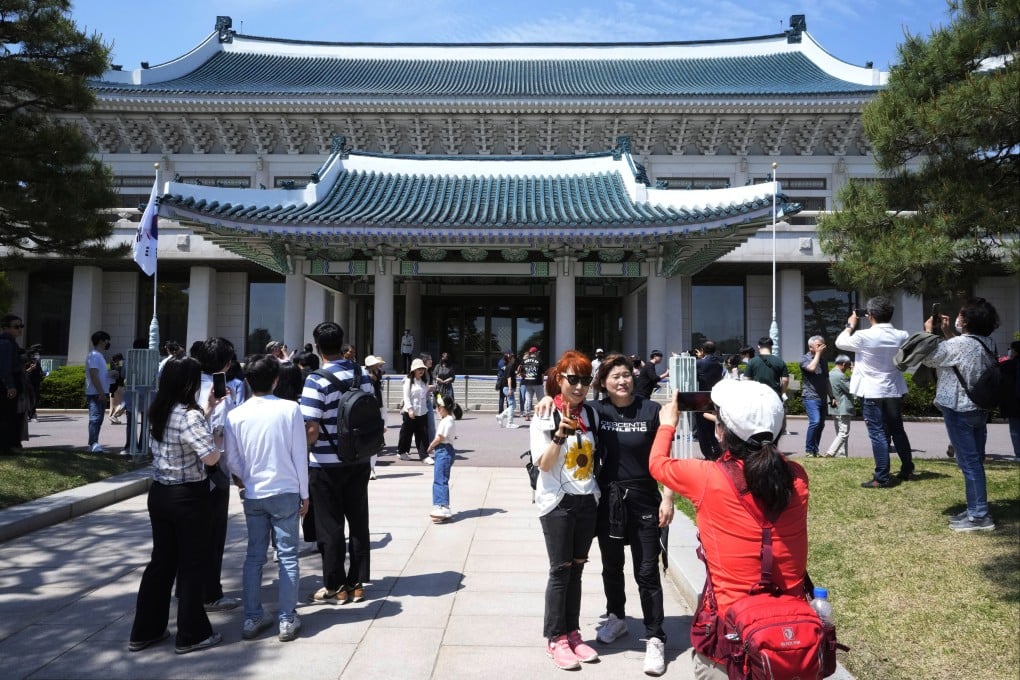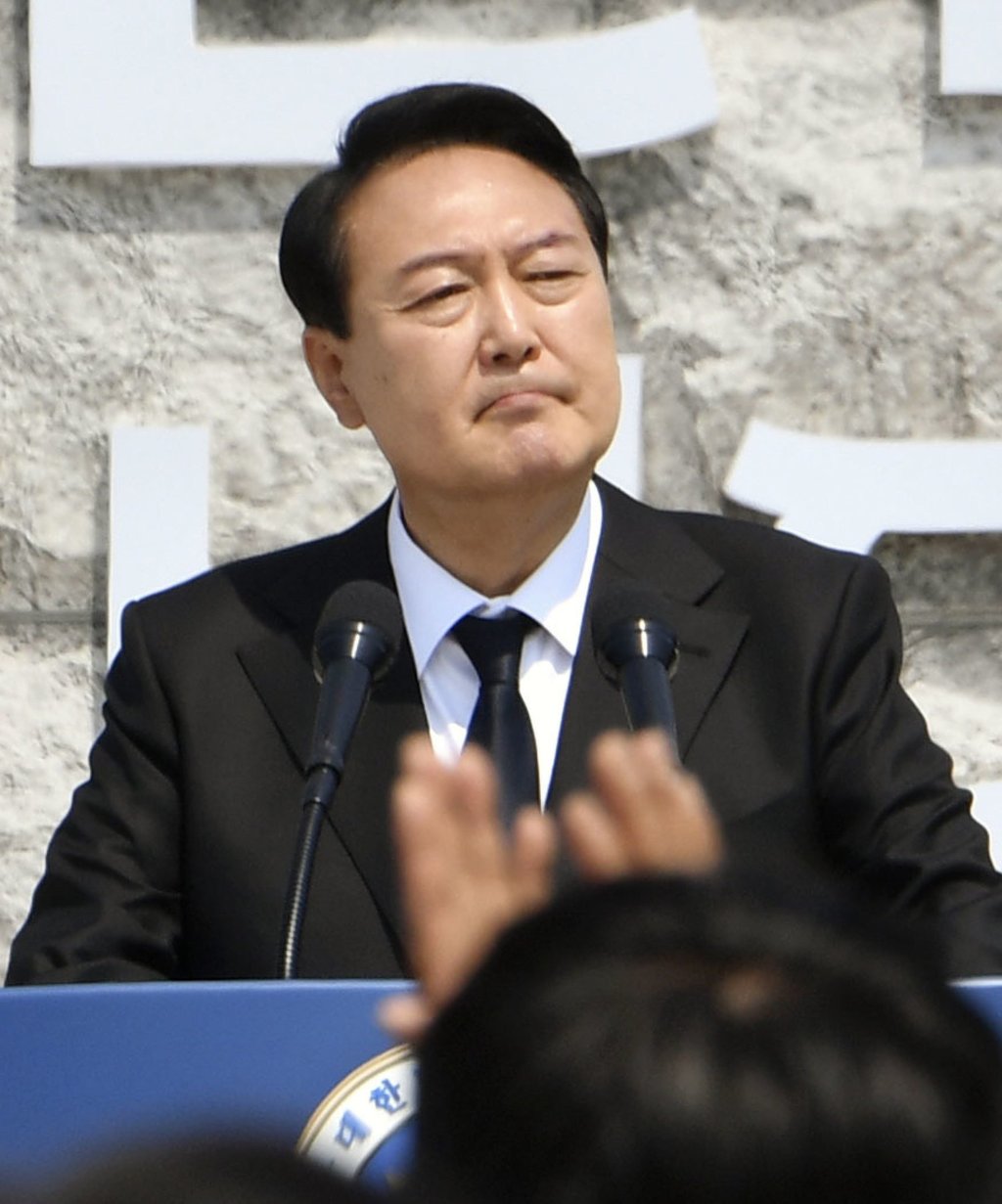South Koreans get to see inside presidential Blue House for first time in 74 years
- South Korea’s new president Yoon Suk-yeol opened the Blue House to the public as part of his pledge to abandon the palace and establish his offices elsewhere
- What once was a little-visited, heavily secured mountainside landmark – named after its distinctive blue roof – now allows a maximum of 39,000 visitors per day

For many South Koreans, the former presidential palace in Seoul was a little-visited, heavily secured mountainside landmark. That has now changed as thousands have been allowed a look inside for the first time in 74 years.
As one of his first acts, new South Korean President Yoon Suk-yeol has moved the presidential offices from the Blue House, named after its distinctive blue roof tiles, and opened its gates to the public, allowing a maximum of 39,000 people a day to visit.
The normally serious compound has been transformed into something like a fair, with excited crowds looking around and standing in long queues.

“I feel grateful that the Blue House has opened to the public,” 61-year-old office worker Lee Sang-woon said recently during a tour with his family. “I am really happy to be here.”
The Blue House opening is part of Yoon’s pledge to abandon the palace and establish his offices at the Defence Ministry compound in the Yongsan district, about 5km (3 miles) away.
Yoon said he chose the Defence Ministry compound because it is already equipped with security-related command facilities. He said he aims to build something similar to the White House in Washington that would let citizens have a closer look at the building over a fence. Yoon said the new offices will allow for better communication with the public.